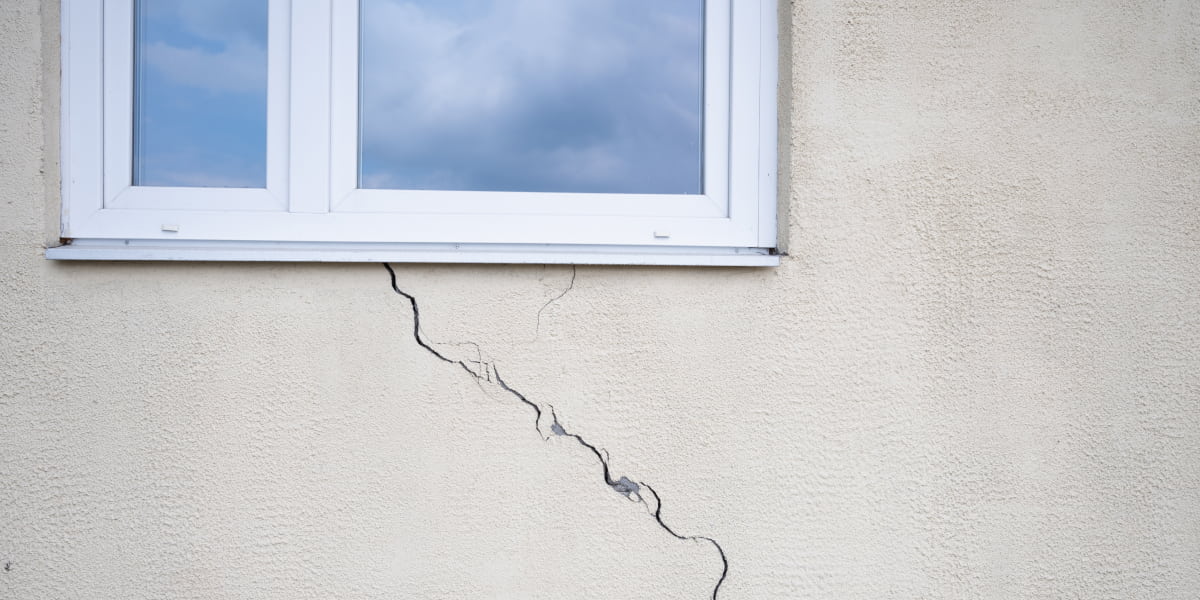Published on January 9th, 2023
Last updated on February 3rd, 2023
How To Fix A Crack In Foundation? Full Repair Guide For Nonprofessionals
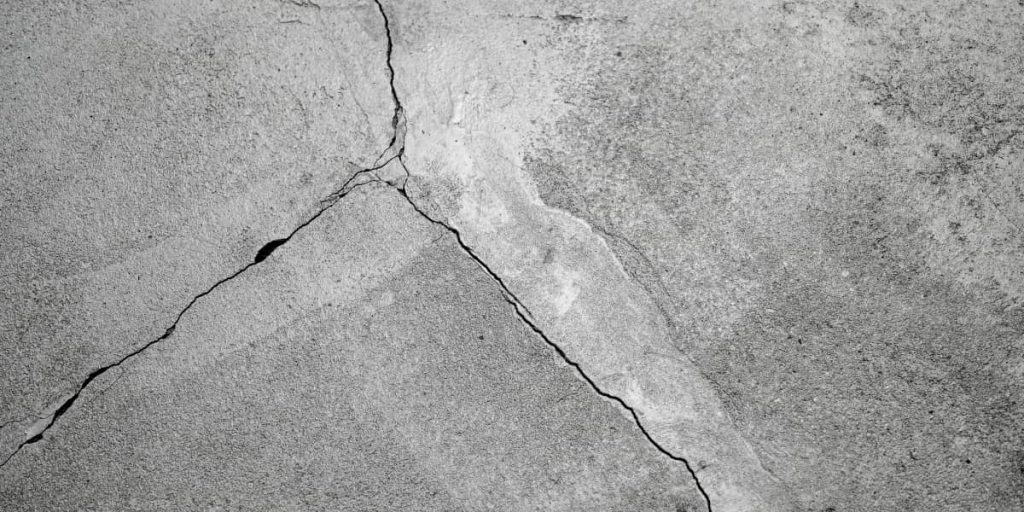
Cracks in the fundament and roof leaks are the most widespread issues with houses. There are many options to repair cracks. You can just reinforce the site or do a screed on the construction floor. The strength and durability of concrete are close to the natural stone characteristics. The technology of preparation and pouring of concrete mixtures requires special knowledge. The lack of this can lead to severe errors.
You may also notice a decrease in the strength of the supporting foundation. It raises the issue concerning a break in the fundament of a house. Basement foundation repair sounds terrifying with disastrous consequences.
Only some cracks are hazardous, but you should not relax. Faced with this defect, you should not panic. Perhaps there is nothing terrible in it. But you should consider the problem. Anyway, the homeowner should ensure that severe structural defects do not cause cracks.
After reading this article, you will learn what to do if there is a crack in the house’s foundation. We figure out how to distinguish dangerous breaks from harmless ones. Next, you’ll learn how to repair cracks in the foundation with your hands.
What Causes the Cracks in the Foundations?

There are many causes of cracks in the foundation of a house. Some of them are the fault of the builders. Others do not depend on anyone. You may not have yet built the house, but cracks in the foundation have already appeared. Then the reasons for filling cracks in the foundation can be as follows:
- poor grade of the materials from which the producer prepared the mixture. Or the manufacturers did not observe the proportions when preparing the mixture;
- errors in the installation of the formwork and reinforcement cage;
- the choice of reinforcement of insufficient cross-section;
- erroneous calculation of the foundation design;
- start of masonry walls before the final hardening of concrete;
- insufficient compaction of concrete, as a result of which you can see air bubbles;
- insufficient drainage, due to that liquid gets into the foundation.
Cracks can also occur during the operation of the building for several reasons:
- soil swelling when groundwater is high;
- temperature extremes;
- earthquakes, vibrations from nearby factories;
- breaking of the waterproofing layer.
Once you have discovered a foundation crack, you should take it under control and fix it. Water can get into it, which can gradually lead to the destruction of the concrete monolith.
What are the Types of Cracks in the Basement Foundation to Repair?

Cracks that appear in foundations can be of the following types:
- сrack in the deflection or warping of the foundation. It can be due to a violation of the foundation construction technology;
- crack in the skew of the building due to sagging in one of the foundation areas;
- crack in the roll of the tall building due to one-sided sagging;
- crack in the lateral displacement of the building;
- crack in the horizontal displacement.
According to the direction of propagation, cracks are:
- vertical;
- horizontal;
- diagonal.
Horizontal breaks are almost always the consequence of a violation of the technology of foundation preparation. Then you need to do foundation crack repairs. In most cases, such cracks do not pose a danger. You can get by with simple plastering.
The most dangerous are diagonal cracks. Because they can lead to the destruction of the fundament. The size of the cracks are:
- small, up to 3 mm;
- large and end-to-end.
When you have noticed a crack, it is necessary to observe it for some time. This is to understand how to proceed:
- use your resources;
- call in professionals.
How to Repair Cracks in the Foundation?
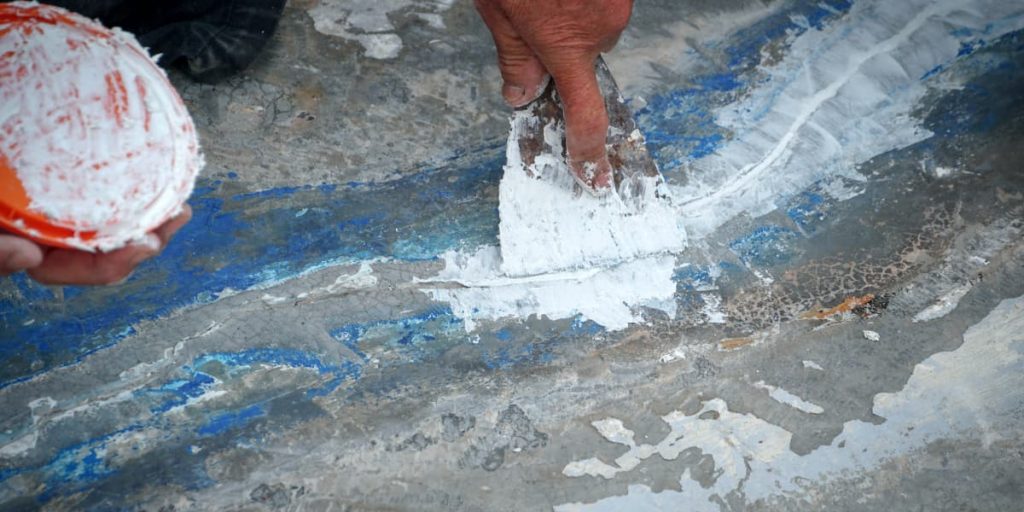
If the situation is under control, you can do it with a quick restoration. Leaving a small crack is not worth it, as water can penetrate the foundation through it.
This is an order of DIY foundation crack repair:
- clean the crack. Many advice to widen it a little;
- apply a primer;
After the primer dries, treat the crack with:
- epoxy;
- cement mortar;
- frost-resistant gypsum.
Concrete mortar with plasticizer will do. If the crack is large, you can add crushed stone. If necessary, construct a formwork so that the mortar can adequately harden. Further action for foundation crack repairs if the crack grows depends on the foundation type and scale.
Crack in a strip foundation
If you set the foundation above the frost penetration depth, cracks are more likely to appear. Also, it can occur if the soil does not have enough bearing capacity. Also, the reason can be bad reinforcement or the fact that the building is not used in winter. What to do? There are several options for filling cracks in the foundation:
- strengthen the broken area with a brick, or a wall of concrete blocks with reinforcement;
- expand the foundation, which requires:
- dig a trench as deep as the foundation;
- install the formwork;
- install the rebar;
- connect it to the foundation;
- pour concrete;
- remove the formwork and perform waterproofing;
- strengthen the site with bored piles. You also need to arrange drainage and thermal insulation of the blind area;
- in some cases, the injection of plastic concrete can help. This is a special polymer material for cracks.
Crack in a monolithic or slab foundation
A monolithic foundation is one of the most reliable and stable, but deep cracks can also appear on it. In this case, you can fix the foundation crack in the following ways:
- if the cracks are still small, you can fill them with epoxy resin. Also, you can fix the problem areas with staples;
- special straps and tapes to tie off the area with a crack. The tapes should contain fibrous kevlar. This option perfectly combines with epoxy resin pouring;
- if the crack is threatening, it will be necessary to dig under the slab. Also, you have to strengthen the foundation, removing those parts. You should do the re-pouring of concrete or mount pile supports.
Cracked pile foundations
Depending on the cause of the crack, the solution to the DIY foundation crack repair may be as follows:
- If the reason is frost heave, it is necessary to insulate the foundation and the backsplash. You can:
- dig out each of the piles;
- replace the soil with sand;
- arrange drainage;
- wrap the piles in polyethylene and dig them.
- if the soil is heterogeneous and the foundation begins to sag, you can install an extra pile;
- if the piles are above freezing depth, you can insulate the screed and the foundation. You can also install the roof on the new piles to fix foundation cracks;
- if you notice cracks in your pile foundation, installing an additional pile will be a good solution.
Cracks in this type of foundation can appear due to:
- frost heaving;
- a heterogeneous foundation under the pile tip;
- installation of the pile tip above the frost penetration depth.
Other causes include:
- poor reinforcement;
- insufficient thickness of the foundation;
- highly volatile soil.
How to Fill a Crack in the Foundation of the Wall?
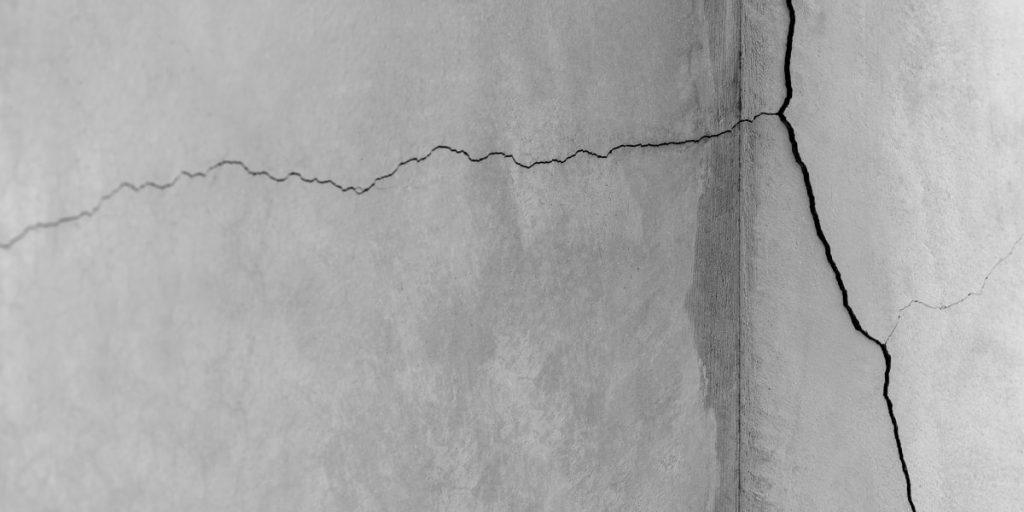
If you decide to do your crack sealing, know that the principle of work will be another from work with foundation. It depends on the material of the wall construction. As every type of material requires its approach to repair. So you should consider it before starting. Let’s consider the most common options for filling cracks in the foundation.
Walls made of brick
Brick is a heavy material. So the appearance of cracks in the foundation under such buildings is an often phenomenon. What can you do with your own hands to fix the foundation crack?
- Dig a trench about 50 cm wide, not reaching the foundation, the wall of the trench to dig at an angle of 30-35 degrees;
- Сlean the foundation wall of dirt, treating with primer;
- Make 3-4 rows of holes to a depth of 50-110 cm (depending on the size of the structure), in the holes hammer anchors;
- To install the formwork at 10-30 cm from the foundation, make a wire cage, weld reinforcement to the anchors;
- Pour concrete in the most profound gaps using local formwork;
- Pour the concrete, and after it hardens, remove the formwork, cover the concrete with waterproofing, backfill the ground, and compact it.
Aircrete walls
Aerated concrete is much lighter than brick. But even under it, the foundation sometimes cracks.
The cause is usually:
- a high water table;
- errors in the arrangement of the waterproofing layer.
What you should do to repair the basement foundation:
- You have to clad the building with a metal frame. To do this, you need to install anchors in the house’s walls and weld them with a metal profile. You can also tie the walls with profile pipe;
- You can vertically fasten a metal channel to increase the rigidity;
- Arrange good drainage around the house or improve the existing one;
- You can use the technology described for a brick house.
Wooden walls
In the foundation of a wooden house, cracks appear least often, as compared with other materials. Wood is lightweight. But with long use or an increase in the load, even the foundation of a wooden house can go cracking.
It is challenging to fix the foundation crack, as:
- the leading way to solve the problem is to lift the house with jacks;
- level the base with a new layer of reinforced concrete.
For such work, you will have to call specialists.
Which Foundation Cracks are Dangerous without Repair?
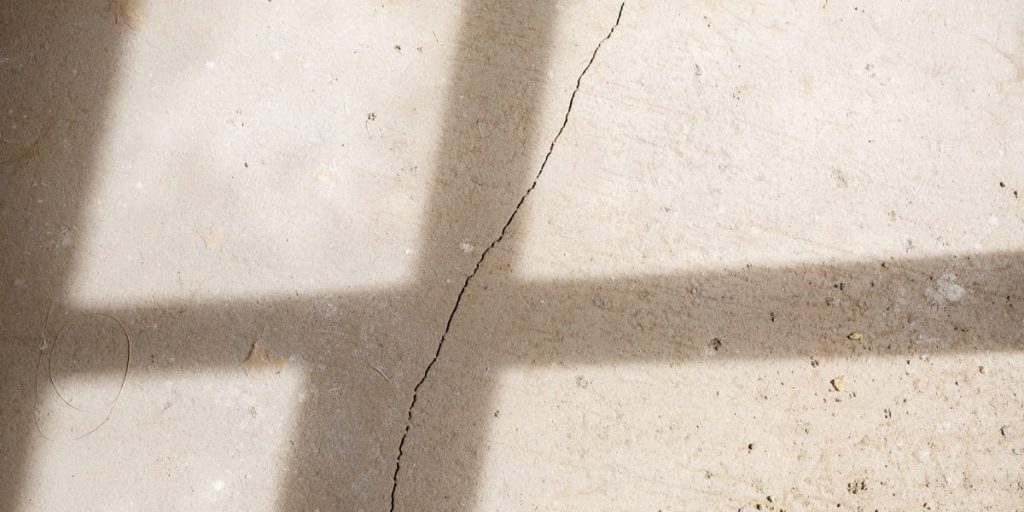
A crack in a foundation can scare anyone, but the good thing is that not all fractures lead to damage. A crack can remain small for decades, requiring little or no intervention.
The instruction for crack diagnosis:
- You clean the crack of dust and install beacons. You can use gypsum mortar as a beacon. You need to apply it to the end of the crack as a figure of eight. A sheet of thin paper will also do for filling cracks in the foundation. Do not forget to write down the date of mounting for the lighthouse.
- The beacon is watched for a long time, not less than three months.
- If the beacon remains intact and the crack does not grow further. Then everything is fine. You should not worry.
- If the crack grew by 0,5 mm within the year, it is not a reason to worry.
- If the crack grew by 1-5 mm during the year, you should still watch. Perhaps the situation will stabilize. If the growth continues, it will be essential to strengthen the foundation.
- If the crack has grown larger by 3 to 5 mm in a month, it is crucial to take urgent action. You use DIY foundation crack repair.
- An increase in the crack by 15-20 mm over a year without any hints of the destructive process stopping is also a signal to perform strengthening works.
Final Thoughts
The appearance of cracks in the foundation usually indicates destructive processes. If the causes are not identified and eliminated, they can damage the structure. The information in this article should help you know the roots of fundament breaks. Besides this, now you know how you can fix your fundament with minimal effort.
FAQ
Can I build a house if the foundation is cracked?
If the crack is up to 3 mm, it is enough to fill it with mortar and continue construction. Larger cracks and vertical breaks are evidence of severe violations of technology. The house can sag or collapse. Therefore, the damaged area is poured again.
How to prevent cracks in the foundation?
To avoid cracks in the foundation, you should properly perform the filling. And then use it correctly. Also, we do not recommend not to start masonry walls until the concrete is completely dried out. You should do the correct installation of the formwork. As it excludes the leakage of moisture.
Can I use epoxy to fix the foundation crack?
The composition is relevant for small damages. You use special nozzles for the work. The working mass with hardener is put into the monolith. After five days, you have to cut off the protruding parts of these nozzles flush with the plane of the concrete. If holes are left unfilled, you need to rub the same mortar.
What can I use to seal cracks in concrete?
For this purpose, cement-sand mixes with expanding cement of factory preparation are often used. Deciding what to fill cracks in concrete, you can choose a mixture consisting of liquid glass (20% of the total mass), cement (20%), and sand (60%).


